Research Article
Volume 3 Issue 3 - 2018
Comparative Evaluation of Combination Methods for Mettalic Bracket Recycling and Rebonding-An Vitro Study
1M.D.S Orthodontics, M.A. Rangoonwala Dental College, Pune
2M.D.S Orthodontics, Proffessor and guide, M.A. Rangoonwala Dental College, Pune
3M.D.S Orthodontics, HOD and Guide, M.A. Rangoonwala Dental College, Pune
4M.D.S Orthodontics, staff, M.A. Rangoonwala Dental College, Pune
5Post Graduate, M.A. Rangoonwala Dental College, Pune
2M.D.S Orthodontics, Proffessor and guide, M.A. Rangoonwala Dental College, Pune
3M.D.S Orthodontics, HOD and Guide, M.A. Rangoonwala Dental College, Pune
4M.D.S Orthodontics, staff, M.A. Rangoonwala Dental College, Pune
5Post Graduate, M.A. Rangoonwala Dental College, Pune
*Corresponding Author: Prerna Dhande, Post Graduate, M.A. Rangoonwala Dental College, Pune, India.
Received: May 20, 2018; Published: June 07, 2018
Abstract
Aim: The aim of this study is to compare the different combination methods of metallic brackets rebonding and recycling by comparing shear bond strength obtained by each method.
Materials and Methods: Patients ages between 18 and 35 years of age who were interested in orthodontic treatment and requires extractions were selected and a total of 260 premolars sample were taken andwere mounted on a jig. 20 teeth were taken as control group out of Total 260 teeth and the groups were made of 20 samples each and were randomly divided into groups to be analyzed in different combination on the basis of the bracket recycling and rebonding method. First bonding procedure was similar for all the teeth. Bracket transferring, positioning, curing was done, and the brackets were debonded and was retained indivivally for individual teeth. Group 1 was control group whose debonding shear bond strength was taken. Group 2, group 3, group 4, group 5, were various combinations of different rebonding and recycling methods. An instron universal strength testing machine of star testing system, India make (computerized) model no STS 248 was used to test the shear bond strength of the rebonded brackets.
Results: Overall comparison showed that laser recycled brackets with remnants completly removed and tooth surface re-etched, showed highest shear bond strength at second debonding.
Conclusion: Combination of laser recycling and rebonding method with complete remnants removal and re-etching the tooth surface gave the highest shear bond strength value. Combination of laser recycling and rebonding with remnants leveled without re-etching the tooth also gave comparable values. The methods of thermal recycling and sandblasting combined rebonding methods of complete adhesive removal and re-etching method also gave sufficient shear bond strengths and can be clinically useful while tungsten carbide bur recycling method showed insufficient shear bond strength and cannot be used clinically.
Key words: Recycling; Rebonding; Bracket; Shear bond strength
Introduction
A common problem among clinicians during patient treatment they face is the accidental dislodgement of orthodontic brackets with the prevalence of bracket loss ranges between 6 and 7.2 per cent with a predominance of premolars and molars. [1-5] The reasons include such as incomplete retention pattern, unfavourable enamel morphology and antagonistic unbalanced tooth-contacts, Improper cleaning of the buccal surface and over-retained plaque. [6,7] Accidental debonding requires rebonding of the bracket. Rebonding of the orthodontic brackets can be done with either new set of brackets or the same brackets can be reused by reconditioning them. [8] Reconditioning of the brackets helps to remove the residual composite layer on the mesh of the bracket base which is then responsible for adequate bonding of the bracket in place on the tooth. Clinicians are developing better methods for reconditioning and reusing of -the same metallic orthodontic brackets without compromising shear bond strength at tooth-bracket interface.
Recycling or reconditioning of brackets can be done either in-office or commercially. [9] The problems which are associated with commercial recycling are mainly due to delay in rebonding as the brackets are sent to laboratory for recycling. [10-12] This can cause unwanted tooth movement and also increase the treatment time. To overcome these problems associated with commercial recycling of orthodontic brackets, in-office recycling methods were developed. In-office reconditioning methods include sand-blasting, thermal or burning method, tungsten-carbide bur and Er: YAG laser method. [13-17]. Aesthetic brackets are difficult to refurbish and studies have shown high rate of bond-failure on bonding refurbished aesthetic brackets. Chances of deformation of aesthetic brackets are high during refurbishing. [18]
When considering rebonding, the reconditioning for the bracket base and the surface treatment of enamel should be considered in conjunction with each other. The shear bond strength of orthodontic brackets on tooth surfaces is dependent on the shear bond strength of the bracket base–resin and resin–enamel interfaces. Majority cases, the major part of the composite remains on the enamel. After bracket loss, sufficient compound layer still remained attached to tooth surface. It is therefore questionable if breaking up this compound and re-establishing it by repeated etching is practical. Failure type is also of clinical importance. Fracture at the resin–enamel interface seems preferable since it allows for quick and easy removal of excess resin but it also leads to more enamel loss. However, fracture at the resin–bracket interface is safer regarding enamel tear-outs.
In most cases where there is remnant of composite on tooth surface which means that bond failure usually occurs at the bracket-composite interface rather than composite-tooth interface. [19] In our study one method is re-etching of the tooth surface with complete removal of the remainder composite layer. Second method is without re-etching of the tooth surface and with complete removal of the remainder composite. The third method is without repeated etching of the tooth surface and leveling of the remainder composite. The study is to determine the best combination method of recycling or rebonding for metallic brackets with minimal damage to the tooth-surface and optimal bond strength. The aim of this study is to compare the different combination methods of metallic brackets rebonding and recycling by comparing shear bond strength obtained by each method.
Materials and Methods
The patients between ages 18 to 35 years were selected from the O.P.D of Department of Orthodontics, in tertiary care centre who were interested in orthodontic treatment and required tooth extractions for the same.The extracted teeth were used as samples for our study.
Inclusion criteria applied for sample selection
- Premolars extracted for purpose of orthodontic treatment
- Non-carious and unaffected buccal surface of teeth
- No abnormal morphologies, hypoplastic teeth, otherwise damaged teeth excluded.
- Extracted of patients between age 18 to 35 years.
Study materials include: 260 Extracted premolars samples for the purpose of orthodontic correction were mounted individually on jig. Materials for the procedure includes Orthodontic metallic brackets (3M Unitek Gemini 0.022" Slot Area: 10.80 mm2), Bracket placing pliers, Debonding pliers, Pressure guage (3 kg of weight)Cold-cure acrylic resin material (Transparent in colour), Colourants (For acrylic jigs), LED curing unit (3M Elipar), Sand-blasting Unit (50um alumina), Etchant (Etch-rite gel; 37% phosphoric acid), Bonding Material (3M Unitek Transbond XT and composite), Universal Testing Machine (Star Universal Tester, Model No. STS 248, Speed: 3 mm/min, Accuracy of the machine: ± 1% ; Made in India), Sand-Blasting machine , Bunsen Burner, Carbide bur with slow speed straight hand piece,Er:YAG laser machine (Fidlis + 3, Fotona, Lubljana, Slovenia, EU).
260 extracted premolars were divided into equal group according to rebonding and recycling technique.
Grouping according to rebonding technique
Group a - Without etching, all composite remnants removed before bonding.
Group b - Without etching, the remnants leveled before bonding.
Group c – Enamel etching, all remnants removed.
Same teeth used in combination testing with recycling for their effect on Shear Bond Strength.
Group a - Without etching, all composite remnants removed before bonding.
Group b - Without etching, the remnants leveled before bonding.
Group c – Enamel etching, all remnants removed.
Same teeth used in combination testing with recycling for their effect on Shear Bond Strength.
Grouping according to recycling technique
Group 1 – New metallic brackets
Group 2 – Sandblasting recycled brackets followed by electro-polishing
Group 3 - Laser aided recycling (Using Er:YAG laser)
Group 4 – Thermal technique recycled brackets followed by electro-polishing
Group 5 – Adhesive grinding (Using Carbide Bur)
Group 1 – New metallic brackets
Group 2 – Sandblasting recycled brackets followed by electro-polishing
Group 3 - Laser aided recycling (Using Er:YAG laser)
Group 4 – Thermal technique recycled brackets followed by electro-polishing
Group 5 – Adhesive grinding (Using Carbide Bur)
Different combination methods of rebonding and recycling methods were grouped as follows
Groups
Groups
| Combination Groups | Sample Size Extracted Premolars |
| Group 1 Control Group - New metal brackets bonded with re-etching | 20 |
| Group 2a Sandblasted recycled metal brackets rebonded without re-etching and all remnants removed | 20 |
| zzGroup 2b Sandblasted recycled metal brackets rebonded without re-etching and all remnants leveled | 20 |
| Group 2c Sandblasted recycled metal brackets rebonded with repeated etching and all remnants removed | 20 |
| Group 3a Laser aided recycled brackets rebonded without re-etching and all remnants removed | 20 |
| Group 3b Laser aided recycled metal brackets rebonded without re-etching and all remnants levelled | 20 |
| Group 3c Laser aided recycled metal brackets rebonded with re-etching and all remnants removed | 20 |
| Group 4a Thermal technique recycled metal brackets rebonded without re-etching and all remnants removed | 20 |
| Group 4b Thermal technique recycled metal brackets rebonded without re-etching and all remnants levelled | 20 |
| Group 4c Thermal technique recycled metal brackets rebonded with re-etching and all remnants removed | 20 |
| Group 5a Adhesive grinding recycled metal brackets rebonded without re-etching and all remnants removed | 20 |
| Group 5b Adhesive grinding recycled metal brackets rebonded without re-etching and all remnants levelled | 20 |
| Group 5c Adhesive grinding recycled metal brackets rebonded with re-etching and all remnants removed | 20 |
| Total Sample Size | 260 |
Extracted teeth were stored in 0.2% thymol solution. The extracted teeth were mounted on a jig of cold cure acrylic roughly keeping the bonding surfaces parallel to the long-axis. Our study involved following steps: New metallic orthodontic brackets were bonded on the freshly extracted teeth. The debonding of those brackets with help of Instron machine to calculate the shear bond strength of the first debonding which was considered as the “control group”. The debonded brackets were recycled with four different techniques and then rebonded by three different rebonding methods.
Then the brackets were again debonded with the Instron machine and the shear bond strengths were assessed. A comparison was then made between combination of different recycling and rebonding methods to know the best combination method.
The Universal testing machine
An Instron Universal Strength Testing (UST) machine of Star Testing System, India Make (Computerized) model no. STS 248 was used to test the shear bond strength of the rebonded brackets. A typical testing system consists of a materials testing machine/test frame, control and analysis software and critically, the test fixtures, accessories, parts and devices used to hold and support the test specimen.
An Instron Universal Strength Testing (UST) machine of Star Testing System, India Make (Computerized) model no. STS 248 was used to test the shear bond strength of the rebonded brackets. A typical testing system consists of a materials testing machine/test frame, control and analysis software and critically, the test fixtures, accessories, parts and devices used to hold and support the test specimen.
The bracket and tooth assembly for testing the shear bond strength was custom made in such a way that the acrylic jig consisting of bracket bonded at the tooth surface assembly was mounted to the lower jaw of Instron Universal Testing machine and the bracket was clamped on to the upper jaws of the crosshead. Before recording the graph of shear bond strength in the computer the jig was held with the cross head of the Universal testing machine in such a way that the bracket base was parallel to the upper crosshead. The shear bond strength is then recorded by calculating the dimension of the bracket base and the amount of force required in newtons to aid the debonding.
Results
Overall comparison showed Group 3c (laser recycled brackets with remnants completely removed and tooth surface re-etched) showed the highest shear-bond strength at second debonding.
Group 3b (laser recycled brackets rebonded with leveling of the remainder composite) showed higher values as compared to the control group.
The statistics showed
- The average shear bond strength is significantly higher in group 3 (laser recycled brackets) as compared to groups 2 (sandblast recycled brackets) and 5 (adhesive grinding recycled brackets) (P-value < 0.05 for both).
- The average shear bond strength is significantly higher in group 1 (Control) compared to group 5 (adhesive grinding recycled brackets) (P-value < 0.001).
- The average shear bond strength of group 1 (Control) did not differ significantly from the groups 2 (sandblast recycled brackets), 3 (laser recycled brackets) and 4 (thermal recycled brackets) (P-value > 0.05 for all).
- The average shear bond strength of group 2 (sandblast recycled brackets) did not differ significantly from group 4 (thermal recycled brackets) (P-value > 0.05).
- The average shear bond strength of group 3 (laser recycled brackets) did not differ significantly from group 4 (thermal recycled brackets) (P-value > 0.05).
- The average shear bond strength is significantly higher in groups 3 (laser recycled brackets) and 4 (thermal recycled brackets) compared to group 5 (adhesive grinding recycled brackets) (P-value < 0.001 for both).
P-values by One-way analysis of variance (ANOVA) with Post-Hoc Bonferroni’s correction for multiple group comparisons, after confirming the underlying normality assumption.
P-value < 0.05 is considered to be statistically significant. S: Statistically Significant, NS: Statistically Non-Significant.
| Total (n) | Mean Strength (MPa) | SD Strength (MPa) | |
| Group 1 (Control) | 20 | 9.55 | 1.63 |
| Group 2a (Sand Blasted - Remnants removed without etching) | 20 | 6.29 | 1.52 |
| Group 2b (Sand Blasted - Remnants leveled without etching) | 20 | 9.19 | 1.86 |
| Group 2c (Sand Blasted - Remnants leveled and re-etching) | 20 | 10.02 | 1.59 |
| Group 3a (Laser Recycled - Remnants removed without etching) | 20 | 6.06 | 1.40 |
| Group 3b (Laser Recycled - Remnants leveled without etching) | 20 | 11.43 | 1.69 |
| Group 3c (Laser Recycled - Remnants leveled and re-etching) | 20 | 12.08 | 1.78 |
| Group 4a (Thermal Recycled - Remnants removed without etching) | 20 | 6.82 | 1.94 |
| Group 4b (Thermal Recycled - Remnants leveled without etching) | 20 | 9.34 | 2.19 |
| Group 4c (Thermal Recycled - Remnants leveled and re-etching) | 20 | 9.98 | 1.74 |
| Group 5a (Adhesive grinding recycled - Remnants removed without etching) | 20 | 5.08 | 2.04 |
| Group 5b (Adhesive grinding recycled - Remnants leveled without etching) | 20 | 7.76 | 2.10 |
| Group 5c (Adhesive grinding recycled - Remnants leveled and re-etching) | 20 | 6.43 | 2.29 |
Table 2: Inter group comparison shear bond strength (overall).
| Group Comparisons | P-value | Group Comparisons | P-value |
| Group 2a v/s Group 3a | 0.999 (NS) | Group 2c v/s Group 4c | 0.999 (NS) |
| Group 2a v/s Group 3b | 0.001 (S) | Group 2c v/s Group 5a | 0.001 (S) |
| Group 2a v/s Group 3c | 0.001 (S) | Group 2c v/s Group 5b | 0.011 (S) |
| Group 2a v/s Group 4a | 0.999 (NS) | Group 2c v/s Group 5c | 0.001 (S) |
| Group 2a v/s Group 4b | 0.001 (S) | Group 3a v/s Group 4a | 0.999 (NS) |
| Group 2a v/s Group 4c | 0.001 (NS) | Group 3a v/s Group 4b | 0.001 (S) |
| Group 2a v/s Group 5a | 0.999 (NS) | Group 3a v/s Group 4c | 0.001 (S) |
| Group 2a v/s Group 5b | 0.984 (NS) | Group 3a v/s Group 5a | 0.999 (NS) |
| Group 2a v/s Group 5c | 0.999 (NS) | Group 3a v/s Group 5b | 0.314 (NS) |
| Group 2b v/s Group 3a | 0.001 (S) | Group 3a v/s Group 5c | 0.999 (NS) |
| Group 2b v/s Group 3b | 0.013 (S) | Group 3b v/s Group 4a | 0.001 (S) |
| Group 2b v/s Group 3c | 0.001 (S) | Group 3b v/s Group 4b | 0.033 (S) |
| Group 2b v/s Group 4a | 0.005 (S) | Group 3b v/s Group 4c | 0.999 (NS) |
| Group 2b v/s Group 4b | 0.999 (NS) | Group 3b v/s Group 5a | 0.001 (S) |
| Group 2b v/s Group 4c | 0.999 (NS) | Group 3b v/s Group 5b | 0.001 (S) |
| Group 2b v/s Group 5a | 0.001 (S) | Group 3b v/s Group 5c | 0.001 (S) |
| Group 2b v/s Group 5b | 0.999 (NS) | Group 3c v/s Group 4a | 0.001 (S) |
| Group 2b v/s Group 5c | 0.001 (S) | Group 3c v/s Group 4b | 0.001 (S) |
| Group 2c v/s Group 3a | 0.001 (S) | Group 3c v/s Group 4c | 0.030 (S) |
| Group 2c v/s Group 3b | 0.999 (NS) | Group 3c v/s Group 5a | 0.001 (S) |
| Group 2c v/s Group 3c | 0.039 (S) | Group 3c v/s Group 5b | 0.001 (S) |
| Group 2c v/s Group 4a | 0.001 (S) | Group 3c v/s Group 5c | 0.001 (S) |
| Group 2c v/s Group 4b | 0.999 (NS) |
Table 3: Intert Group Comparison of Shear Bond Strength (Overall).
Comparison of sandblast recycled brackets showed Groups 2b (sandblasted brackets rebonded without re-etching and with remnants leveled) and 2c (sandblasted brackets rebonded with re-etching of the tooth and all remnants removed) showed shear bond strengths comparable to the control group. Comparison of laser recycled brackets showed Group 3c (laser recycled brackets with all remnants removed and tooth re-etched) had significantly more shear bond strength values as compared to the control group. The Group 3b (laser recycled brackets rebonded with all remnants leveled and tooth not re-etched) showed values comparable to the control group.
Thermal recycled brackets on sscomparison stated that shear bond strengths comparable to the control group were seen with Groups 4b (all remnants removed and thermal recycled brackets rebonded without re-etching) and 4c (all remnants removed and thermal recycled brackets rebonded with re-etching of the tooth). The tungsten carbide bur recycled bracket groups 5a, 5b, 5c showed least shear bond strength values that were insufficient for the clinical use of this method.
Discussion
Pus M D., et al. (1980) had conducted a study that checked the surface changes associated with various methods of enamel surface treatmen. [20] This data significantly shows that repeated etching and cleanup of the remainder resin with a rotary instrument is harmful as it causes additional enamel loss. Powers., et al. (1997) in his study stated that a shear bond strength of 8 MPa is sufficient to retain a bracket at the tooth surface. Gwinnett and Gorelick (1977) advocated that shear bond values greater than 13 MPa may be at higher risk of enamel tear outs since cohesion forces of the enamel structure might be exceeded. [3] Based on their findings, our study infers that in-office recycling of metallic orthodontic brackets with sand-blasting (average shear bond strength 10.02 MPa), laser-etching (average shear bond strength 12.08 MPa) and thermal recycling (average shear bond strength 9.98 MPa) provide shear bond strength sufficient to retain the bracket at the tooth surface.
Our study also assessed the shear bond strength values at the second debonding of the test groups as compared to the first debonding values of control group. The results stated that the shear bond strengths at the second debonding with some of the rebonding techniques were increased to those of the control group. These findings were consistent with a study done by Daniel Ruger., et al. 2011 in which shear bond strengths were checked for at multiple debondings. [19] These values are comparable to the results obtained in our study wherein the average shear bond strengths achieved by the Laser recycling method Group 1 (12.08 MPa S.D 1.78), Group 2 (6.06 MPa S.D 1.40) (and Group 3 (11.43 MPa S.D 1.69). The Study groups with Sand-blast recycled, thermal recycled and laser recycled brackets showed that the methods of rebonding the brackets with the remnants completely removed, tooth surface re-etched and the remnants leveled and the brackets rebonded without re-etching can be successfully used for bracket rebonding. Daniel Ruger., et al. also surmised that the shear bond strength values with routine rebonding procedures increase at the second debonding as compared to the first and later decreased at the third debonding. These findings were consistent with all four study groups mentioned in this study. Matasa has claimed that a bracket can be reused up to five times, whereas Wheeler and Ackerman’s observation was that single recycling was of negligible clinical importance. [17,18]
Conclusion
Shear bond comparison was made by using different combinations of methods of recycling and rebonding of the debonded brackets. The results of the study concludes that the combination of laser recycling method (Group 3c) and rebonding with complete remnants removal and re-etching the tooth surface gave the highest shear strength value, which was significantly more than control group but within acceptable levels.The combination of laser recycling and rebonding with remnants leveled without re-etching the tooth also gave comparable shear bond strength and is clinically acceptable with advantage of avoiding re-etching of the tooth surface and thereby avoiding tooth enamel damage.The methods of thermal recycling and sand-blasting combined rebonding methods of complete adhesive removal and re-etching method 4c and adhesive leveled without re-etching, method 4b also gave sufficient shear bond strengths and can be clinically useful.The recycling methods of tungsten carbide-bur recycling of the bracket base with all recycling methods showed insufficient shear bond strength and cannot be used clinically. The combination of adhesive grinding on bracket base with rebonding by complete sadhesive removal and without re-etching (Group 5a) showed least shear bond strength.
References
- Asgari S., et al. “Clinical evaluation of bond failure rates with a new self-etching primer”. Journal of Clinical Orthodontics 36.12 (2002): 687-689.
- Elekdag-Turk S., et al. “Six-month bracket failure rate evaluation of self- etching primer”. European Journal of Orthodontics 30.2 (2008): 211-216.
- D Praveen Kumar Varma. “Recycling of orthodontic bracket by sandblasting - an in vitro study”. Journal of Indian Dental Association 5 (2001): 544-545.
- Tang A T., et al. “Retrospective study of orthodontic bonding without liquid resin”. American Journal of Orthodontics and Dentofacial Orthopedics 118.3 (2000): 300-306.
- Adolfsson U., et al. “Bond failure of a no-mix adhesive during orthodontic treatment”. American Journal of Orthodontics and Dentofacial Orthopedics 122.3 (2002): 277-281.
- Mattick C R and Hobson R S. “A comparative micro-topographic study of the buccal enamel of different tooth types”. Journal of Orthodontics 27.2 (2000): 143-148.
- Linklater R A and Gordon P H. “An ex vivostudy to investigate bond strengths of different tooth types”. Journal of Orthodontics 28.1 (2001): 59-65.
- Oliver R G and Pal A D. “Distortion of edgewise orthodontic brackets associated with methods of debonding”. American Journal of Orthodontics and Dentofacial Orthopedics 96.1 (1989): 65-71.
- Buchman DJL. “Effects of recycling on metallic direct-bond orthodontics brackets”. American Journal of Orthodontics and Dentofacial Orthopedics 77.6 (1980): 654-68.
- Shinya Horiuchi., et al. “Reinforcement of bond strength of self-etching orthodontic adhesive”. Angle Orthodontist 82.1 (2012): 30-35.
- Michael Knosel., et al. “Suitability of orthodontic brackets for rebonding and reworking following removal by air pressure pulses and conventional debracketing techniques”. Angle Orthodontist 80.4 (2010): 649-655.
- Vittorio Cacciafesta., et al. “A 12 month clinical study of bond failures of recycled versus new stainless steel orthodontic brackets”. European Journal of Orthodontics 26.4 (2004): 449-454.
- Basudan AM and Al-Emran SE. “The effects of in-office reconditioning on the morphology of slots and bases of stainless steel brackets and on the shear/peel bond strength”. Journal of Orthodontics 28.3 (2001): 231-236.
- Mascia V E and Chen S R. “Shearing strengths of recycled direct bonding brackets”. American Journal of Orthodontics and Dentofacial Orthopedics 82.3 (1982): 211-216.
- Wright W L and Powers J M. “In vitro tensile bond strength of reconditioned brackets”. American Journal of Orthodontics and Dentofacial Orthopedics 87.3 (1985): 247-252.
- Postlethwaite KM. “Recycling bands and brackets”. British Journal of Orthodpedics 19.2 (1992): 157-163.
- Arun Kulandaivelu AV., et al. “Comparative evaluation of the effectiveness of Er:YAG laser and other in-house refurbishing methods for reconditioning stainless steel brackets”. Journal of Oral Laser Applications 9.2 (2009): 121-127.
- Roberto Martina., et al. “Recycling effects on ceramic brackets: a dimensional, weight and shear bond strength analysis”. European Journal of Orthodontics 19 (1997): 629-636.
- Daniel ruger., et al. “Shear bond strength after multiple bracket bonding with or without repeated etching”. European journal of orthodontics 33.5 (2011): 521-527.
- Coley- smith and Rock w p. “Distortion of metallic orthodontic brackets after clinical use and debond by two methods”. British journal of orthodontics 26.2 (1999): 135-139.
Citation:
Prerna Dhande., et al. “Comparative Evaluation of Combination Methods for Mettalic Bracket Recycling and Rebonding-An
Vitro Study”. Oral Health and Dentistry 3.3 (2018): 673-682.
Copyright: © 2018 Prerna Dhande., et al. This is an open-access article distributed under the terms of the Creative Commons Attribution License, which permits unrestricted use, distribution, and reproduction in any medium, provided the original author and source are credited.



































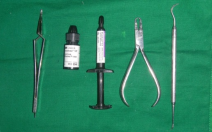
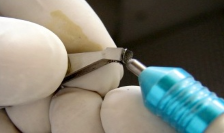
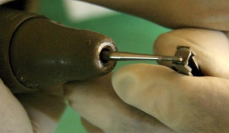
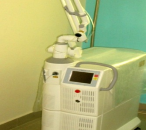
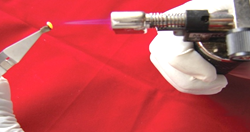

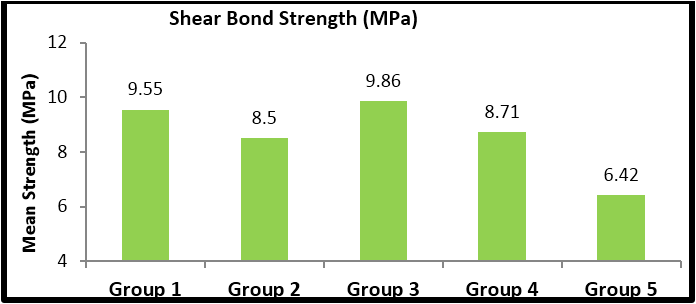
 Scientia Ricerca is licensed and content of this site is available under a Creative Commons Attribution 4.0 International License.
Scientia Ricerca is licensed and content of this site is available under a Creative Commons Attribution 4.0 International License.